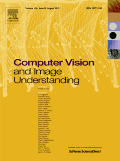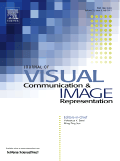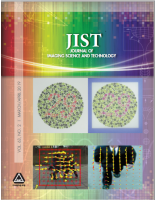
Journal of Real-Time Image Processing
Scope & Guideline
Pioneering Research in Instant Image Processing Applications
Introduction
Aims and Scopes
- Real-Time Image Processing Techniques:
The journal publishes research on methods that enable real-time processing of images and videos, ensuring that algorithms can operate effectively under time constraints. - Application of Deep Learning:
A significant focus is on the application of deep learning techniques, particularly convolutional neural networks (CNNs) and their variants, to solve complex image processing tasks. - Hardware Acceleration and Optimization:
Research often includes the development of hardware-optimized solutions for image processing, such as FPGA and GPU implementations, which enhance the performance of algorithms. - Object Detection and Recognition:
The journal highlights advancements in object detection and recognition, particularly using YOLO (You Only Look Once) models and other deep learning frameworks. - Cross-Disciplinary Applications:
Submissions explore a variety of applications across domains such as autonomous vehicles, medical imaging, agriculture, and security, showcasing the versatility of real-time image processing. - Semantic Segmentation and Image Enhancement:
Research on semantic segmentation techniques and methods for enhancing image quality in real-time scenarios is prominently featured.
Trending and Emerging
- Advancements in YOLO Frameworks:
There is a clear trend towards the development and enhancement of YOLO-based models for real-time object detection, showcasing innovations that improve speed and accuracy. - Federated Learning and Privacy-Preserving Techniques:
Emerging research on federated learning indicates a growing emphasis on privacy-preserving methods in image processing, which is crucial for applications involving sensitive data. - Integration of AI with IoT:
The convergence of artificial intelligence and the Internet of Things (IoT) is becoming prominent, particularly in applications such as smart surveillance and environmental monitoring. - Real-Time Medical Imaging Applications:
There is an increasing focus on real-time applications in medical imaging, such as disease detection and monitoring, reflecting the critical role of image processing in healthcare. - Energy-Efficient Processing Solutions:
Research is increasingly targeting energy-efficient algorithms and hardware solutions, which are essential for mobile and embedded systems operating under resource constraints. - 3D Reconstruction and Augmented Reality:
Emerging themes include 3D reconstruction techniques and augmented reality applications, highlighting a shift towards immersive technologies and their integration with real-time image processing.
Declining or Waning
- Traditional Image Processing Techniques:
There is a noticeable decline in the publication of papers focusing on traditional image processing methods, as the field shifts towards more complex and adaptive deep learning approaches. - Low-Level Image Processing:
Papers that primarily deal with low-level image processing tasks, such as basic filtering and enhancement techniques, are becoming less common as researchers pursue more sophisticated applications. - Static Image Analysis:
Research centered around static image analysis without real-time constraints is decreasing, as the emphasis is increasingly placed on dynamic and real-time processing capabilities. - General Purpose Algorithms:
Algorithms that are not specifically tailored for real-time applications or do not leverage current hardware advancements are seeing reduced interest.
Similar Journals

Journal of Signal Processing Systems for Signal Image and Video Technology
Unveiling Cutting-edge Developments in Signal Processing Systems.Journal of Signal Processing Systems for Signal Image and Video Technology, published by SPRINGER, is a leading interdisciplinary journal dedicated to advancing research and development in the fields of signal processing, image processing, and video technology. With an ISSN of 1939-8018 and an E-ISSN of 1939-8115, this journal emphasizes both theoretical and practical applications, boasting a wide scope that ranges from control and systems engineering to hardware architecture. Since its inception in 2008, it has gained a solid reputation, reflected in its 2023 category quartile rankings—including Q2 in Control and Systems Engineering and Q3 in Signal Processing—demonstrating its significance within the academic community. The journal is underpinned by a commitment to open access, promoting broad dissemination of knowledge, and is particularly vital for researchers, professionals, and students looking to contribute to and stay updated in these rapidly evolving fields. With ongoing explorations into the convergence of technology and methodology until 2024, the journal stands as a crucial resource for the latest innovations and discussions in signal processing systems.

COMPUTER VISION AND IMAGE UNDERSTANDING
Illuminating Innovations in Computer VisionCOMPUTER VISION AND IMAGE UNDERSTANDING is a leading academic journal published by Academic Press Inc, Elsevier Science, dedicated to the advancement of the fields of computer vision, image understanding, and pattern recognition. Since its inception in 1993, this esteemed publication has garnered a reputation for excellence, achieving a remarkable Q1 ranking in the categories of Computer Vision and Pattern Recognition, Signal Processing, and Software as of 2023. With its robust impact factor and high visibility in the scientific community—ranking #22 out of 106 in Computer Vision and Pattern Recognition and #27 out of 131 in Signal Processing—this journal serves as a vital resource for researchers, professionals, and students looking to explore and contribute to state-of-the-art developments. Although it does not operate under an Open Access model, its rigorous peer-reviewed content ensures quality and relevance in a rapidly evolving technological landscape. The journal’s commitment to fostering innovation makes it an essential tool for anyone engaged in the study and application of computer vision technologies.

IMAGING SCIENCE JOURNAL
Transforming Perspectives in Pattern RecognitionImaging Science Journal, published by Taylor & Francis Ltd, serves as a vital resource for researchers and professionals in the fields of computer vision, pattern recognition, and media technology. With an ISSN of 1368-2199 and an E-ISSN of 1743-131X, this journal has been fostering scholarly dialogue since its inception in 1997, with a converged content offering extending through 2024. Its categorization in Quartile 4 in Computer Vision and Pattern Recognition and Quartile 3 in Media Technology highlights its relevance and contributions to emerging trends in these domains. Although it ranks 36th in the Engineering - Media Technology category and 96th in Computer Science - Computer Vision and Pattern Recognition, its innovative research and insights continue to attract the attention of scholars dedicated to advancing knowledge at the intersection of imaging technologies. Offering versatile access options, this journal is essential for students, researchers, and professionals aiming to stay informed and engaged in the rapidly evolving landscape of imaging science.

Image Processing On Line
Transforming insights into breakthroughs in image processing.Image Processing On Line (ISSN: 2105-1232, E-ISSN: 2105-1232) is a pioneering open-access journal published by IMAGE PROCESSING ONLINE-IPOL since 2011, dedicated to advancing the field of image processing through the dissemination of high-quality research and innovative methodologies. Based in France, the journal serves as a platform for researchers, professionals, and students to share insights and breakthroughs in the rapidly evolving domains of Signal Processing and Software. With its current ranking as Q4 in both categories according to the 2023 category quartiles, and a Scopus ranking highlighting its significance within the computer science field, the journal is focused on nurturing contributions that push the boundaries of image processing techniques. Accessible to a global audience, Image Processing On Line is crucial for those engaged in both theoretical explorations and practical applications, ensuring a collaborative repository of knowledge that fosters innovation and development in this vital area of technology.

International Journal of Image and Graphics
Connecting Scholars to the Future of ImagingInternational Journal of Image and Graphics, published by World Scientific Publishing Co. Pte Ltd, serves as an essential platform for scholars and practitioners in the realms of Computer Graphics, Computer-Aided Design, and Computer Vision and Pattern Recognition. Established in 2001 and based in Singapore, this journal has become increasingly influential, with a reputation reflected in its Q3 and Q4 rankings across key categories in Scopus, highlighting its growing impact in the academic community. Open access options remain limited; however, the journal's commitment to disseminating high-quality research allows for a rich exchange of ideas among professionals and students alike. As the 2023 metrics indicate, contributions to the journal not only enhance individual academic portfolios but also promote advancements in image processing, fostering innovation and growth within the discipline until at least 2024. It is thus a vital resource for anyone looking to deepen their knowledge and understanding of contemporary trends and technologies in image processing and related fields.

International Journal of Applied Pattern Recognition
Bridging theory and practice in pattern recognition.International Journal of Applied Pattern Recognition, published by INDERSCIENCE ENTERPRISES LTD, is a leading peer-reviewed journal that delves into the intricate world of pattern recognition and its applications across various domains, including computer vision, machine learning, and data mining. With its ISSN 2049-887X and E-ISSN 2049-8888, the journal aims to foster academic dialogue and present cutting-edge research that bridges theory and practice. As a vital resource for researchers, professionals, and students in the field, the journal emphasizes innovative methodologies, practical implementations, and interdisciplinary collaborations. Although it does not follow an open access model, contributions to the journal are rigorously vetted to ensure the highest quality of published work. By focusing on real-world applications and advancements in pattern recognition, the International Journal of Applied Pattern Recognition stands out as a key publication that not only informs but also inspires significant progress in the field.

AI, published by MDPI, is a distinguished open access journal dedicated to advancing the field of artificial intelligence. Since its inception in 2020, the journal has swiftly established itself as a prominent platform for scholarly research, currently ranking in the Q2 category for 2023 within the artificial intelligence sector according to Scopus. With an impressive global reach from its base in Basel, Switzerland, the journal aims to foster innovation and collaboration among researchers, professionals, and students alike, providing a forum to share groundbreaking findings and applications in AI. The journal's commitment to accessibility ensures that research is available to a wide audience, enhancing knowledge dissemination and contributing significantly to the ongoing evolution of artificial intelligence technologies. To explore the latest in AI research, readers can access articles through their open access model, encouraging an inclusive academic environment.

JOURNAL OF VISUAL COMMUNICATION AND IMAGE REPRESENTATION
Connecting Visionaries in Image and Media TechnologyJOURNAL OF VISUAL COMMUNICATION AND IMAGE REPRESENTATION, published by Academic Press Inc Elsevier Science, is an influential platform dedicated to the realms of visual communication, media technology, and advanced image representation. With a strong focus on interdisciplinary approaches, this journal aims to foster the exchange of innovative ideas among researchers and professionals in the fields of computer vision, image processing, and signal processing. Recognized for its significance, it boasts an impressive impact factor within its category quartiles; notably, it ranks Q2 in Computer Vision and Pattern Recognition and Electrical and Electronic Engineering, while achieving Q1 in Media Technology. Based in the United States, the journal not only provides valuable insights into the latest developments from 1990 to 2024 but also encourages cutting-edge research that enhances multimedia systems and user interactions. As a vital resource for students, researchers, and industry professionals alike, the journal ensures a robust understanding of visual information processing, critical for navigating today's digital landscape.

Jordan Journal of Electrical Engineering
Fostering Dialogue in Electrical Engineering ExcellenceJordan Journal of Electrical Engineering, published by TAFILA TECHNICAL UNIVERSITY (TTU) in Jordan, serves as a critical platform for disseminating groundbreaking research in the fields of electrical engineering, energy systems, and related disciplines. With an ISSN of 2409-9600 and an E-ISSN of 2409-9619, the journal is committed to promoting advancements in energy engineering, biomedical applications, control systems, and signal processing among others. Despite its recent establishment in 2023, it has been indexed in multiple categories within Scopus, receiving rankings that reflect its emerging role in the academic community. Researchers and professionals are encouraged to contribute and access cutting-edge articles through open access options, ensuring that knowledge is readily available to all interested parties. As the journal continues to grow, it aims to bridge gaps in knowledge and stimulate dialogue, thereby supporting innovation and practical applications in the engineering sector.

JOURNAL OF IMAGING SCIENCE AND TECHNOLOGY
Connecting Scholars in the World of ImagingJOURNAL OF IMAGING SCIENCE AND TECHNOLOGY, published by I S & T - SOC IMAGING SCIENCE TECHNOLOGY, is a pivotal resource in the realms of imaging science, optics, and materials. With its ISSN 1062-3701 and E-ISSN 1943-3522, this journal has been disseminating influential research since 1993 and continues to be a vital platform for scholars up to 2024. Despite its varied quartile rankings across disciplines—such as Q4 in Atomic and Molecular Physics and Optics, and Q3 in Chemistry (Miscellaneous) and Electronic, Optical and Magnetic Materials—it provides an essential forum for innovative ideas and advancements. The journal’s focus on interdisciplinary connections encourages collaboration among researchers in the fields of chemistry, computer science, and physics. Researchers, professionals, and students interested in exploring the latest imaging technologies and methodologies will find invaluable insights within its pages, making it a significant addition to their academic libraries.